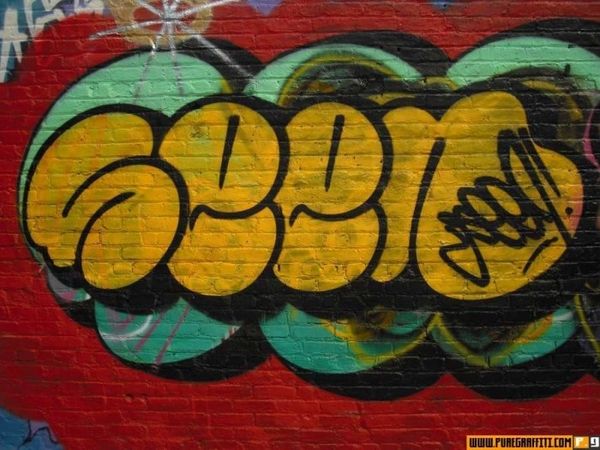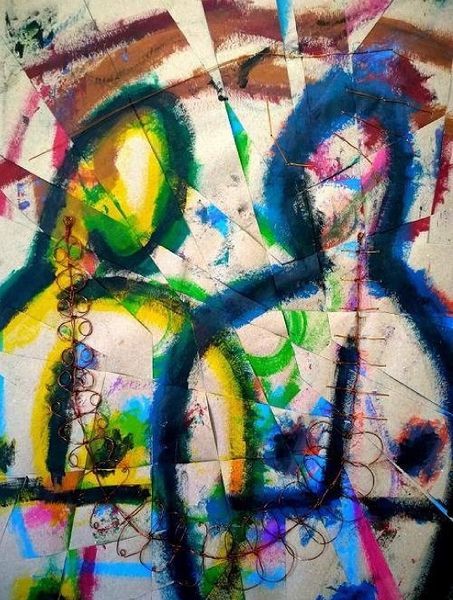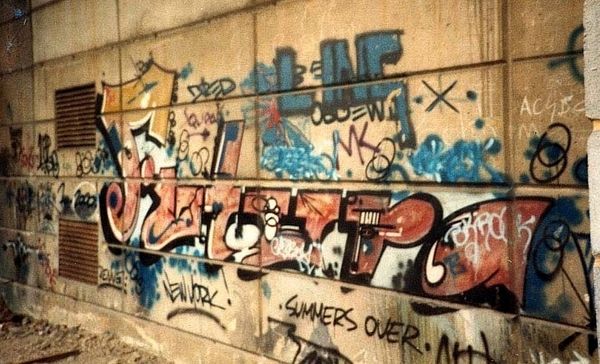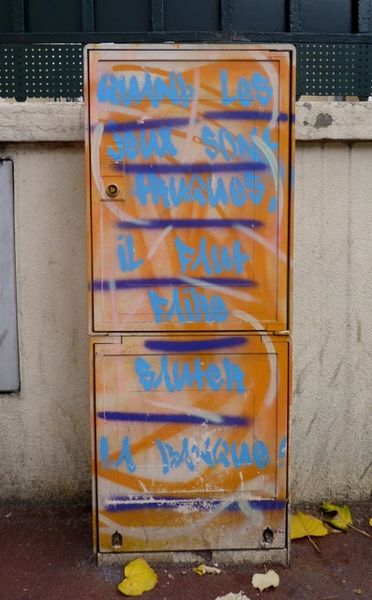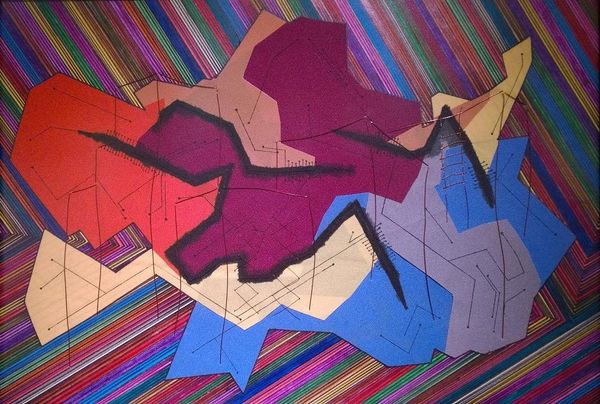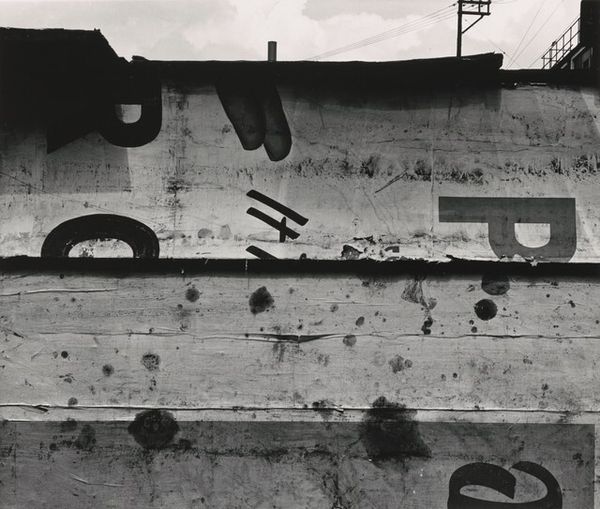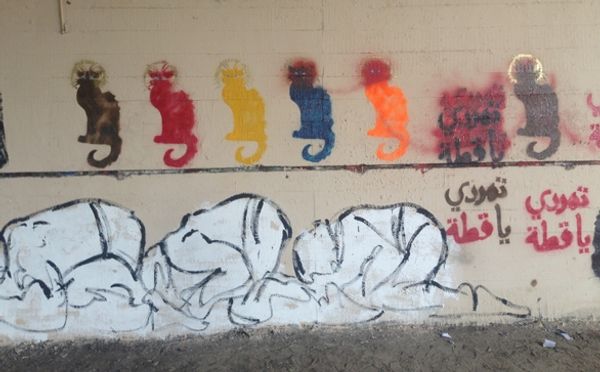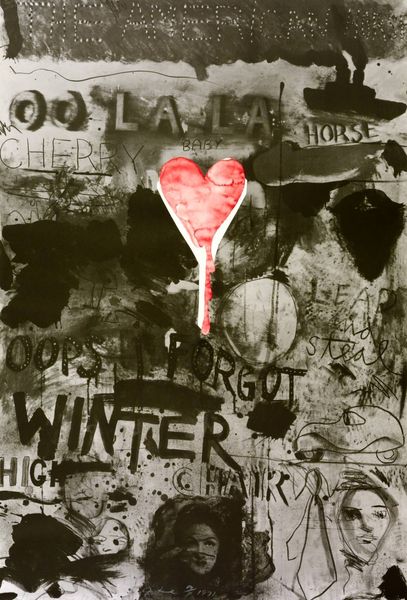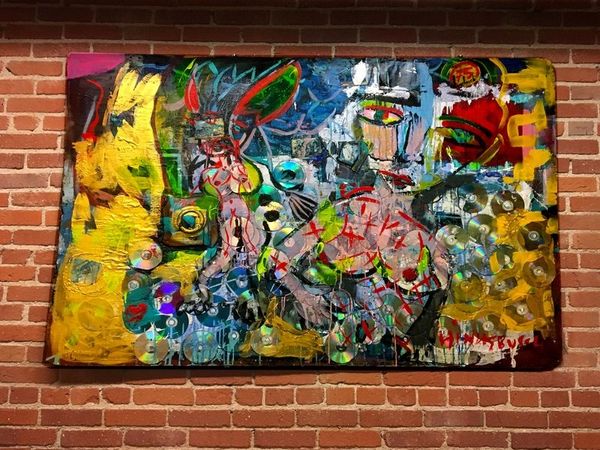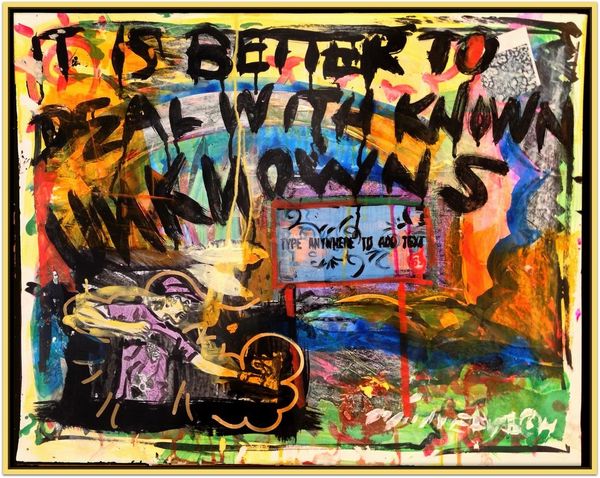
Dimensions: image: 46.36 × 36.51 cm (18 1/4 × 14 3/8 in.) sheet: 50.8 × 40.64 cm (20 × 16 in.)
Copyright: National Gallery of Art: CC0 1.0
Editor: We’re looking at Kris Graves's photograph, "Lee Square, Richmond, Virginia," from 2020. It seems to be a close-up of a monument base absolutely covered in graffiti. The colors are vibrant, but the overall impression is chaotic and angry. How do you interpret the imagery captured here? Curator: This photograph documents a pivotal moment of socio-political transformation. What we see is not merely graffiti, but layered voices in a public square, speaking truth to power. Lee Square, renamed from Monument Avenue, held a statue of Robert E. Lee until its removal. Graves's image captures the monument's final stage, completely reclaimed by the community. Editor: Reclaimed is an interesting choice of words. Curator: Consider the context: monuments are inherently political statements, erected by those in power to reinforce certain narratives. Here, the community actively countered that narrative through visual protest, essentially decolonizing public space. The anger, the chaos, the bright colors—they all represent the energy of a collective demanding change. Note the prominence of "BLM." How does this relate to the artistic and societal impact? Editor: It definitely emphasizes that this isn't random vandalism; it’s a deliberate act connected to the Black Lives Matter movement and a larger call for racial justice. So the defacement becomes a new kind of monument? Curator: Precisely. And a temporary one, emphasizing the fluid nature of history and the ever-evolving public role of art. Graves documented not the end of the story but a chapter within it. This photograph becomes part of a new, visual vocabulary redefining public memory. What will this vocabulary say in years to come? Editor: It’s powerful to think about the photograph not just as a picture of graffiti, but as a record of a community finding its voice and reshaping its environment. Curator: Indeed. Kris Graves's photograph encourages us to examine not only what we memorialize, but also how and why. A challenging task for artists today, I would say.
Comments
No comments
Be the first to comment and join the conversation on the ultimate creative platform.
